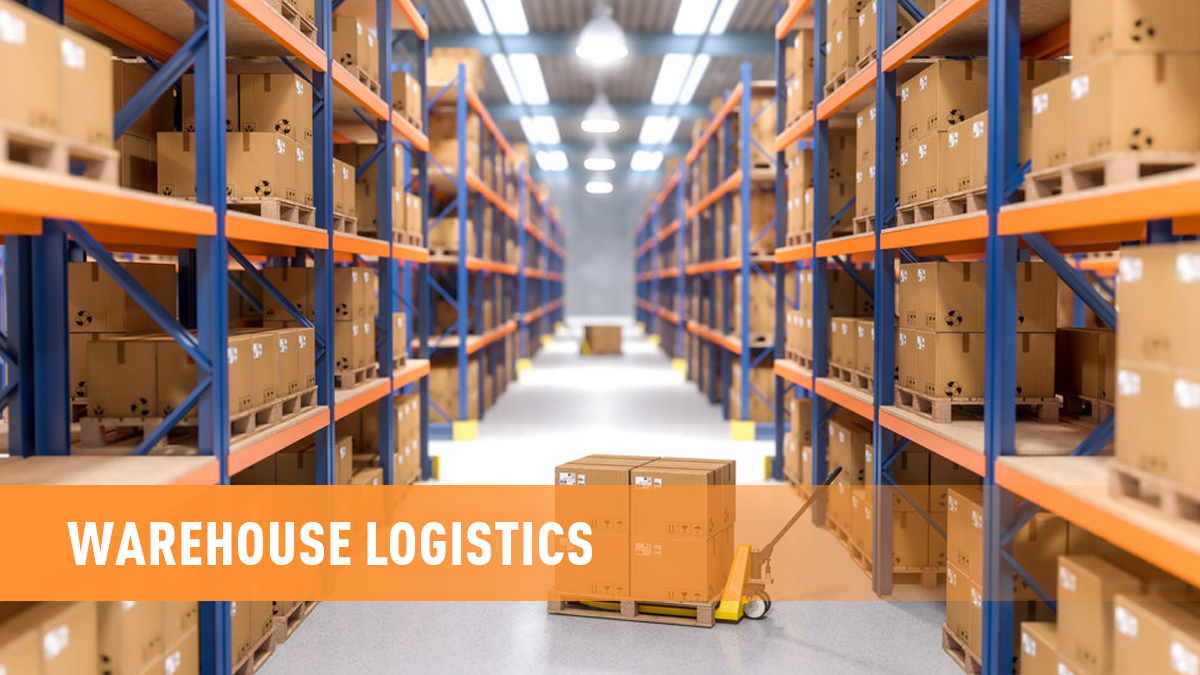
Warehouse Logistics
Then we must first consider the importance of logistics itself to describe warehouse logistics. Logistics may be defined as the comprehensive planning, market, management , and execution of complex operations in the simplest possible terms. Logistics also refers to the distribution of physical goods and knowledge in most sectors, including warehousing. Thus, warehouse logistics encompasses each of the varied, complex factors involved in warehousing business, movements, and management. Including the movement of actual inventory (shipping and receiving), as well as that of more intangible items, including information and time. Warehouse logistics can also range from warehouse pest control to managing damaged goods, security procedures, human resource management , and customer returns. In other words, warehouse logistics requires all of the necessary procedures, processes , and organizational tools to keep the warehouse operations running smoothly.
Warehouse logistics covers both goods and information movements within warehouses and distribution centres. It involves tasks such as receiving, storage, order selection, processing, sorting and shipping. Many recent developments in both production and distribution have made the logistics of warehouses increasingly relevant and complex. Supply chain management efficiency is often dictated by operations management expertise in distribution centres. From a technological point of view, there are several steps to maturing from a warehouse. Most of the warehousing has to do with logistical problems such as the movement of physical items, knowledge and time. Issues such as the handling of defective goods, safety practices and customer returns also impact warehouse logistics. Through choosing and implementing a centralized computer system, such as a warehouse management system or CMMS, facility managers may begin to collect and organize the data needed to enhance warehouse logistics.
Warehouse logistics covers both goods and information movements within warehouses and distribution centres. This involves tasks such as receiving, transport, order selection, processing, sorting and shipping. Several recent developments in both production and distribution have made the logistics of warehouses increasingly relevant and complex. Supply chain management efficiency is mostly determined by operations management competence in distribution centres.
From a technological point of view, there are several steps to maturing from a warehouse. We help businesses identify their actual position and progressively improve process management efficiency.
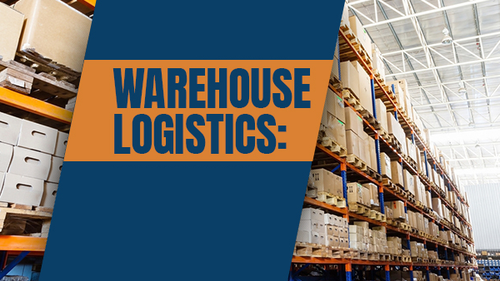
- Maximizing Security. Reduce risks.
A successful warehousing and distribution network is the secret to success for any company in today's challenging and competitive market. Our superior warehousing services, as an integrated supply chain management firm, take care of all your logistical needs effectively ensuring minimal risk for full production. In a competitive industry, minimizing your investment risk and cutting operating costs is critical. The warehousing services therefore provide integrated supply chain management solutions to allow you to make the most of your business. - Cares for the business
Completely understand and care for your business and logistics needs. This helps to deliver service solutions that will help you develop your business. The extensive network of warehousing and distribution dedicated and shared operations enables you to fulfill your commitments and deliver your products safely. With modern packaging and warehousing techniques and an advanced distribution system, the warehousing system helps you automate processes, so that you deliver to your customers in perfect time, every time. - Warehousing and Logistics Differences
However there are several differences between warehousing and logistics. The terms warehousing and logistics are frequently combined because they are simply two sides of the same coin, but many people get the terms mixed up. Both the warehousing and logistics perform roles within a business' supply chain. Warehousing, on the one hand , focuses on the secure storage of goods in a building while logistics is the practical component of processing and transporting goods stored in a warehouse. This is why warehousing and logistics work together to ensure that these components work together effectively. - Warehousing is just a different word to a warehouse. It is a commercial building, where in manufacturing or for sale goods or raw materials are processed for us. A warehouse provides a central location for the collection , storage, and delivery of raw or finished products. An enterprise's warehousing function includes a range of elements such as unloading, receiving and inspecting inbound items, processing, collecting orders and managing returns.
- Logistics have two hands, the inbound and the outbound movement of products. Last but not least, logistics is about the movement of goods in and out of a factory (both raw and finished). Logistics encompasses transport, internal movement, inventory, and any other relevant information. A large part of logistics is end-to - end consumer demands, from the availability of goods to the final delivery of products.
As you can see, while warehousing and logistics are two distinct business functions, having one without the other would be impossible. Through working in conjunction with your warehousing and logistics, you can ensure the secure storage and distribution of your goods, while providing the technological flexibility to meet end-to - end customer demands.
Description of logistics at warehouse

To define the logistics of warehouses, we must first consider the logistics itself. Logistics can be described, in the simplest possible terms, as comprehensive planning , coordination, management and execution of complex operations. Logistics also refers to the distribution of both physical goods and information in many sectors, including warehousing. Therefore, warehouse logistics include all the various, dynamic factors involved in warehousing-organization, movements, and management. This involves the movement of actual products (shipping and receiving) and of more abstract items, including details and time.
Warehouse logistics can also extend from warehouse pest control to handling damaged goods, security policies, human resource management , and customer returns to anything. In other words, warehouse logistics includes all of the policies , procedures and organizational tools needed to keep your warehouse operations running smooth.
Warehouse Logistics Advantages
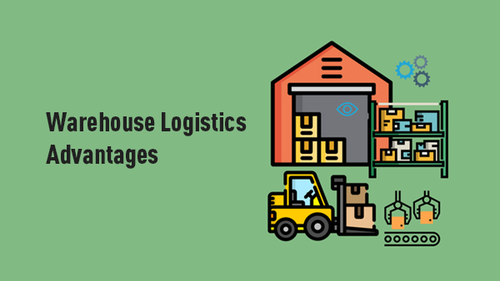
The benefit of managed warehouse logistics is easy improved revenue. Think of it this way: When the warehouse operations run smoothly, the product is properly accounted for, the correct item is delivered at the right time, stock is replenished as needed, less picking errors occur, and all the staff, procedures , and systems are in place as they should, the warehouse runs more efficiently. Less mistakes and less issues, meaning maximized revenues
When you introduce a solid WMS to manage the logistics of your warehouse you:
- Ensure reliable , real-time inventory counts: Know how much inventory you have in your warehouse-and its exact location.
- Returns to decrease : The first time an objective look at your inventory means sending the appropriate object.
- Auto-replenish stock : Do not wait until you are out of stock (or almost out of stock) to order more; let your WMS auto-replenish stock when stock levels are low.
- Maximize warehouse space : some WMS automate warehouse processes (e.g. stock rotation and picking), ensuring that staff would require less floor space, which in effect implies optimizing warehouse space to store more product.
Other WMS advantages include better demand forecasting, enhanced visibility and accountability, stock traceability, less picking mistakes, streamlined procedures, efficient labor allocation and improved customer service factors that boil down to lower operating costs and increased sales.
Warehouse Logistics Challenges

Common warehouse logistics problems have to do with organization: Simply put, how do you get comprehensive control of anything as large as a warehouse?
And still, you do have to. You need to be able to locate the precise location of a specific product item, the pallet carrying a potentially expired food item, or the truck carrying an object that was damaged during shipping. Such controls are vital to smooth operations and healthy sales, and yet they are almost impossible to accomplish without professional resources. Warehouse problems run deeper than those immediate issues, extending among other factors to inventory management , supply chain management, cost controls, human resources, risk management, and protection. And how do you achieve sufficient versatility to stay competitive while ensuring acceptable customer service services while still exercising sufficient controls to protect your income? Those are the issues that warehouses face today.
How to Improve Warehouse Logistics
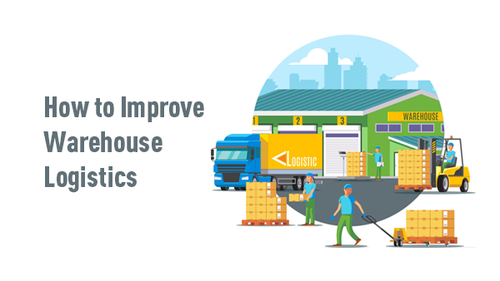
It's unquestionable: warehouse managers have plenty on their desks. Thankfully, you do have increasingly useful, extremely efficient resources to help you fulfill your warehouse needs, your employees' requirements and your customers' expectations. Advanced warehouse management systems (WMS) provide you with real-time insight into your warehouse and equip you and all your staff with the necessary tools to manage your warehouse efficiently, efficiently and profitably. In fact, a WMS is not only a sure way of improving warehouse logistics, but is also a must in warehousing today. Warehouse management systems, rather than an inventory control system, take care of all warehouse operations, from inventory control and management to order satisfaction. Many WMS today integrate mobile apps, allowing your warehouse managers and staff to access the system on the go, through smartphones. Comprehensive WMS also integrates conventional management techniques with Warehouse Control Systems (WCS) to create a whole-warehouse alignment from product receipt to shipment to boost the overall logistics.
Warehouse Considerations Influence Warehouse Logistics
A competent WMS will certainly turn the operations and optimize the logistics. But no matter how efficient a software tool can only go as far as human error. Warehouse considerations shape your logistics heavily in real-life settings. Your warehouse managers and, to some degree, all staff involved in using your equipment and WMS must be well trained in this. Your shipping, 3PL, and associated contractors and suppliers have to coordinate their logistics efforts. Any changes to your warehousing new racking, updated organization, etc.must be accounted for in the system or problems will manifest quickly.
Logistics in the warehouse is not static. They change with your physical needs, your stock, your staff and any other factors they govern. Ultimately, while you can incorporate tools and procedures to help manage and monitor logistics in warehouses, smooth operations rely on watchfulness, proper training and changing policies.
Popular Warehouse Logistics Problems and How to Resolve
Today , e-commerce and other changes have affected the way in which warehouses operate. Modern warehouses are bigger than ever and function differently than what they used to be. To certain businesses, this can mean a whole new set of logistics problems. The challenges your brand faces in warehouse logistics are likely to be common. We 're going to deal with some of the most common warehouse challenges, and how to deal with them.
The simplest way to define logistics is to define the details inherent in the organization , management, planning and implementation of complex operations. Logistics also includes the flow of information and physical goods in a number of industries, such as the warehouse industry. Warehouse logistics really refers to the whole range of complicated factors involved in the warehousing process. Logistics could include things as varied as pest control, safety policies, handling of damaged goods, HR management , customer service, and more.
What the challenges of warehouse logistics
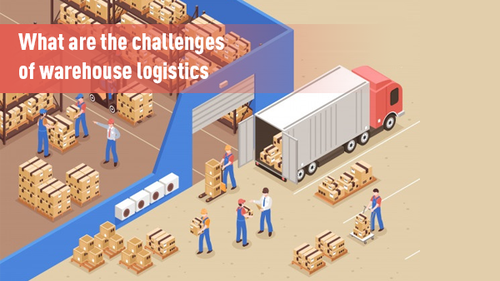
A warehouse is distinguished by many of the logistics challenges. Where can any detail in an enormous warehouse be checked? It may seem unlikely, but it's necessary and after all, it's not really unlikely. In a store, staff need to identify exactly where particular stock items are stored, because such items could, for example, be damaged, returned or revoked. This knowledge is necessary to keep things going smoothly and to maximize profits. But getting isn't easy. You need the right techniques and tools to make logistics work. To face these challenges ensures that you are agile enough to overcome the market, thus meeting the needs of customers and more. It isn't easy to manage a warehouse, particularly because e-commerce means orders which tend to grow every day. Those are one of the big obstacles and approaches to address these problems in warehouses today.
- Improper inventory :- Warehouse logistics' success depends on their inventory. You will either run out of stock or hold too much stock because you don't know the whole inventory. Because you can't. It is obvious that running out of an element can present a problem. But it can also cause problems to store too much. It decreases the amount of cash flow into the factory and raises the costs as an additional stock is stored.
But getting an inventory shortage is certainly the worse of the two things. When you do not have products in stock when they are ordered, due to unfulfilled orders, you will face complaints from the customers. It can be difficult to make up the reputation of your brand once that happens to a couple of clients. Modern software can help stay accurate in inventories. When you don't use software to monitor your inventory, much more likely you can run into inaccuracies. - Poor position in the inventory :- If there's inadequate inventory control, things get inefficient. The inefficiency leads to slower operations and greater costs. It takes longer to send out things after they have been ordered if you don't know where your inventory is even if you know that you have it. Time gets lost finding the right things for customers to give. Then the loading cycle slows down, scheduling is thrown off and there are more problems. Warehouse logistics are working in a delicate balance and many other areas can be thrown away by one problem.
- Disorganized Warehouse Layout :- Storage management in a warehouse is one of the most important issues. Does your layout at your warehouse help or hurt? It's not a matter of having rooms. Numerous warehouses are big enough for the mission. They may feel smaller or less coordinated, however, because the room has not been wisely used. When you maximize the room, you will be cutting back on the wasted labor. Keep the inventory, for example, that often sells and moves quickly near the front of the warehouse. This way, lift drivers don't have to go all the way to the factory back for anything they're always having back.
- Repetitive Processes :- Keeping things organized and thorough is critical. This is also possible, however, to take it too far and to create redundant, repetitive processes which do not serve the warehouse. You may notice, for example, that paperwork like pick tickets gets passed around far more hands than it needs. This is not only repetitive but also provides more space for mistakes. Using barcode technology is a good way to solve this issue, so that the information is added to the object and is made accessible to everyone who handles it.
- Choosing one is not tailored :- If manual procedures at your warehouse are still in place, there is often no daily route taken when products are picked for shipment. This leads to a complex process which can change depending on who works that day. Avoid adding extra time with processes of unoptimised selection. Streamline and optimize as much as you can and you'll be surprised at how the logistics of your warehouse improves.
The world of shipping, buying and selling has changed. When your logistics in the warehouse has not changed with it, things will easily get confused and inefficient. Implementing these techniques to resolve the logistics issues will save time, energy , and effort all along the path of delivering products to customers.
Importance of Warehousing In A Logistics System

Warehousing is a very important aspect of running a logistics network. It provides storage for the finished products and also involves order packaging and distribution. Efficient warehousing gives both the company and the customers a major economic profit.
A list of the importance of warehousing services in a logistics system is given here:
- Inventory Control : A warehouse allows an organization to handle a huge volume of inventory. It helps balance the supply with the demand of a fast-changing world.
- Centralization of goods: As all goods are stored in a central location, receiving, storing and distributing the products becomes easier. And a company's shipping costs are reduced. It is the duty of the warehouse staff to locate, sort and distribute the goods as soon as the shipment arrives.
- Value Adding Operation: The warehousing method tends to increase the value of the goods, because the goods are at the right location at the right time. Different other operations such as order consolidation, order assembly, product mixing, cross-docking etc. are carried out under one building, thus adding value to the overall logistics systems.
- Economic Benefit A warehouse offers the businesses a wide range of economic benefits through efficient operations. Different costs are high including outbound distribution costs, shipping costs, transport costs etc. The storage of the goods allows a warehouse to serve as a buffer and maintain a balance between the supply and demand of the goods. That works in a variety of ways to maximize a business' income.
- Community Benefit: A warehouse often provides consumers with a wide variety of social benefits, allowing them to retain a safe supply during an emergency, such as delay in shipping and damaged product shipment, etc.
- Cross-docking: This is a method of directly transferring the goods from receiving the shipment with little to no inventory. This is a more reliable and safe way of transporting the goods.
Warehousing service is the most critical supply chain portion and the logistics network. This allows a company to manage the inventory, and the data review helps reduce the likelihood of shipments being delayed. With the warehousing management system, monitoring the delivery times would become much easier.
Using automation to improve warehouse logistics
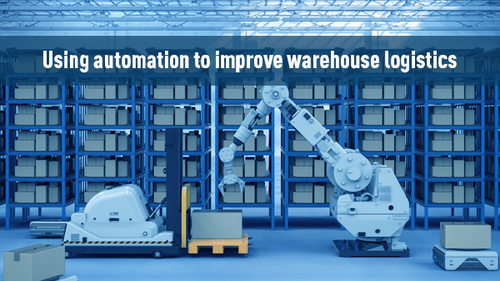
As customers demand more from distribution systems, producers need to streamline their logistics in warehouses. Rapid advancements in technology are enhancing services across the supply chain and rising efficiency in factories. Manufacturers are investing in this equipment to satisfy customers' ever-changing demand for more personalized goods. Consumers want more from the goods, and they expect more from services as well, particularly delivery. Many online platforms now provide one-day delivery, and sometimes even less. It is necessary to choose the technology to be used in the warehouse based on how it will increase efficiency, save money and add value to the business.
Smart monitoring
When more goods enter the factory, plant managers need to do more to ensure they can monitor each product reliably on their path to the customer. Radio frequency identification ( RFID) tags are not a new technology but are being implemented into the supply chain to enhance service quality. Employees shall at any time have real-time data showing the exact position of any product. Many businesses also look at quicker delivery with more sophisticated technology, such as drones. Technology does not minimize any customer's delivery time to 15 minutes but it can streamline warehouse processes to maximize deliveries in the through consumer sector.
Wireless network As several processes are wireless a wireless network could be built. Nevertheless, the network does not bring much benefit to the company when they use apps, including smart glasses. Warehouses are also full of goods, so making sure that maneuvering around the facility and working with the equipment is simple for humans is crucial.
Safety
For too much going on in distribution warehouses, people are at risk of injury from handling heavy goods, taking products from high shelves and needing to work around vast structures.
In the warehouse some technology will change how humans interact with packaging. Automated guided vehicles (AGVs), for example, can carry heavy loads that would be unmanageable to humans. That enables human employees to focus on other tasks requiring a more imaginative approach.
Wearables often improve the way staff are able to complete their warehouse jobs. Smart glasses weren't common for consumer applications, but now workers use them to get details about the job at hand, allowing them to complete it faster and more accurately. Smart glasses will convey information to workers on screen , allowing both hands to perform the job easily and efficiently.
Hands-free, wearable devices also enable workers to move around the warehouse with ease, streamlining their interactions with products and accessing information from anywhere.
Warehouse Logistics : From Shipping Materials to Fulfilment Efficiency
Your merchandise goes through a complex chain of procedures from the time you place an order to the moment your purchase arrives at your home or place of business. Reaching a product from a supermarket shelf into your mailbox takes several measures. Warehouse logistics is a complex process from storage, customer service, and packaging to shipping and tracking, ensuring deliveries arrive safely and in a timely fashion. If you are a customer who is interested in better understanding the process that enables companies of all types to deliver directly to your door or you are a business owner who wants to build a better strategy for processing and shipping orders, check out this warehouse logistics guide to further your knowledge and to deepen your understanding of this complex topic.
What Is Logistics?
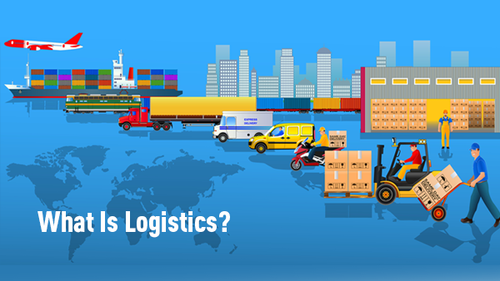
To put it simply, logistics is about handling how resources are collected, processed, packed and delivered to their final destinations. The preparation, execution , and monitoring of movement and positioning will all take place using a method designed to produce precise outcomes. The exact processes and desired results can differ from one industry to another, although there are several similarities.
Small enterprises often handle most of the process themselves. However, larger firms usually need to partner with multiple parties to keep up with the demand. For example , major corporations like Amazon have numerous partnerships to make sure Prime members receive their orders in just two days or even less. Packaging products takes a lot of effort, sending out Amazon tracking numbers and shipping orders in under 48 hours, but Amazon's logistics industry partners are making it possible. For small companies the logistics process isn't nearly as complicated. However, it is still important to have a solid plan in place which helps you to fulfill orders quickly and meet customer expectations.
When an Order Is Received As soon as an order is issued the clock begins ticking. Thanks to e-commerce giants such as Amazon and our need for immediate gratification, customers aren't able to wait weeks to bring their goods delivered. If you are selling products to individual customers or supplying other companies, systems need to be in place to deliver the items to the end customer as quickly as possible. In the next few sections we will explore how the method of order fulfillment works for businesses using a model of self-fulfillment. Your production process, product management, and warehousing activities are all usually located inside the same facility in companies using this model. While placing and charging for an order, a worker picks, packs and delivers the order to the customer. We'll think about the third party fulfillment process a little later.
Once an order arrives, you or your employee gets to work planning for shipping. While packaging was once as simple as throwing a product into a box and tapping it shut, more has come to expect from modern consumers. You have an opportunity to enhance the brand and boost the consumer experience when choosing and packaging the products.
There are uncountable packaging forms to choose from. There are several products that can be used to get your merchandise from point A to point B, ranging from custom corrugated cardboard boxes to poly mailers and more. When choosing shipping containers, go for small , lightweight options to save on shipping costs. If you're shipping products that contain hazardous materials, such as lithium-ion batteries, be sure to use packaging designed for your particular application. Cushioning and void fillers, such as packing peanuts and air pillows, will also be needed to keep the merchandise safe while it's on its way to its final destination.
Preparing Items for Shipment
Whatever kinds of packaging and shipping materials you use, it is essential to come up with an efficient and effective system to get products ready to send out. Whether you choose to use custom boxes or otherwise add a touch of customisation, your warehouse needs a dedicated packaging area. It is important to keep all your shipping materials close to hand so that your employees can quickly bundle products and ready them for shipment. When it comes to warehouse productivity, a common issue that delays a lot of companies is the lack of a good system for planning orders for shipment. For example, if you store boxes at one end of your warehouse and pack peanuts or another empty filler at the opposite end, you or your employees will spend a lot of time walking around collecting everything that's required to get an item ready to ship out. By simply stocking all your packaging and shipping materials in one place, you can dramatically improve performance. Try to hold hands-on little items like packing tape, too.
When an order has been boxed it must be numbered. In most firms, this involves printing and affixing a mark to the packet, poly mailer or other package. Writing labels by hand can provide a personal touch, but it typically takes much too much time to be business effective. This process often leaves much more room for error so it's safer to have a label printing device.
In the past, customers placed orders and then waited for them to arrive with no knowledge of when they would finally receive their items in their mailbox or on their doorstep. But today, just about everyone is monitoring their shipments to decide when they'll arrive. Most carriers, including the United States Postal Service, assign the tracking numbers to all packages automatically. It is important to ensure that tracking information is provided with each outgoing shipment to keep the customers satisfied and ensure that they are aware when their orders are delivered, and when they should expect them to arrive.
Keep in mind that if you are shipping delicate, perishable or dangerous goods, you will also be required by law to affix correct labels to let the shipping company know that you need to treat the products with care. Also when shipping items to other countries additional labeling is required. When an order has been selected, packed and appropriately labelled, a carrier may deliver it or pick it up. From there, it travels across the country or around the world to be delivered to the customers doorstep.
Benefits of the Self-Fulfillment Method
If you want to remain in control of every step of fulfilling an order, the way to go is by self-fulfillment. This method is the most affordable for many startups and small businesses, and provides the easiest way to get started. Nonetheless, what it saves you money is costing you in time. Collecting, packaging and delivering goods yourself means eliminating the risk of dealing with a third party, but that could risk you in the form of lost sales simply because so much of your time is spent on order fulfillment. However, businesses who do prefer the self-performance option have a lot of control over exactly how products are packed, selected, and packaged. It makes it easier to ensure that each product is packed in a certain manner and enables companies to incorporate personal touches which would not be easy to do by hiring a logistics company from a third party. Unless your company is concerned with managing the experience your customers have when purchasing your goods, your best choice may be self-fulfillment.
Fulfillment by third party
Unless one thing is evident from the procedure outlined here, order fulfillment can be a complicated and time-consuming operation. The do-it-yourself approach to picking , packing, and shipping orders is not feasible for many bigger companies simply because of the large number of orders they need to process. And many other business owners feel the time they spend preparing orders is time they could spend on other things better.
That is where fulfillment by third parties comes in.
Working with a third-party logistics company or 3PL essentially means outsourcing all the processes of warehousing, packing , and shipping to another corporation. You usually buy or manufacture your products, and then ship it to your 3PL warehouse. Your stock is coordinated with your online shop, and stored in the warehouse. The third party logistics company picks, packs and delivers the shipment to your client when a shipment is requested and paid for.
Benefits of 3PL
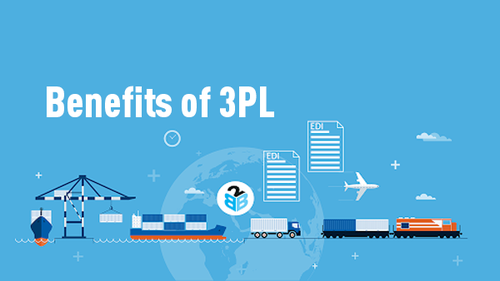
Companies of all sizes and forms work with their warehousing and order fulfilment needs with third parties. As most 3PLs integrate directly with the common e-commerce sites, they are extremely productive and simple to work with. Whether you have limited warehouse space or you want to concentrate your energies on areas of your company other than order fulfillment, it might be your best choice to partner with a third party logistics firm.
Using a 3PL to outsource your needs for storage, picking, packaging and shipping means freeing up more time to focus on things like acquiring new customers, marketing, nurturing your existing customer relationships and much more. You can also save money on shipping costs by partnering with a third party. If your company can ship only a few hundred packages a month, your 3PL is likely to send out hundreds of thousands. This helps them to establish deeper relationships with carriers and negotiate better shipping rates than you would be able to do on your own. Naturally the downside is that you have much less influence over the operation. Since the 3PL is essentially responsible for your customer's final handover of a product, it can make or break the experience and satisfaction of your customers. It 's crucial to do your due diligence and ensure that the company you select is one that you can always count on to fulfill the needs of your and your customers.
Conclusion
Naturally the downside is that you have much less influence over the operation. Since the 3PL is essentially responsible for your customer's final handover of a product, it can make or break the experience and satisfaction of your customers. It 's crucial to do your due diligence and ensure that the company you select is one that you can always count on to fulfill the needs of your and your customers. Consumers today expect to receive their orders quickly, and they want to check each step of the way. Although self-fulfillment helps you to take care of the entire cycle from beginning to end, it's a very time-consuming endeavor. By partnering with a third-party logistics firm, you can save a lot of time for yourself and your employees while maintaining the smoothest possible operation. However, because using a 3PL means giving up a degree of control, it's extremely important to choose one that you can trust to deliver consistent , high-quality results that meet your company's and customers ' needs. Warehouse logistics is complicated, and ultimately, it is your duty to decide the process that best fits your priorities and business needs. However, this guide will give you a better image of how the process works to help you choose the right choice for you.
Let's start with the simple way to create a website.

Interested in Domitos? Get the Features Guide Today!
Domitos, is world's most sought after facility Management System and we look forward to work with. Digitize your facilities today!